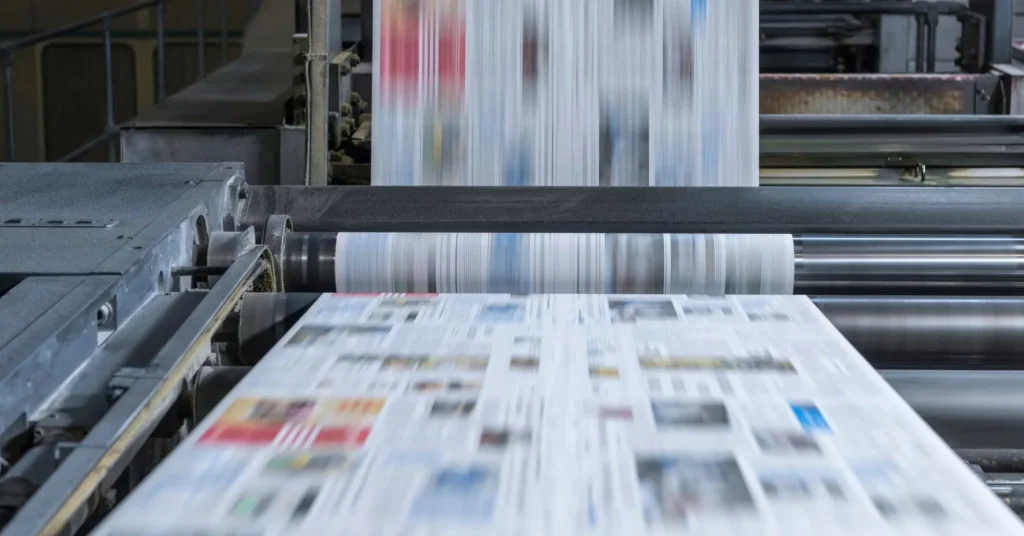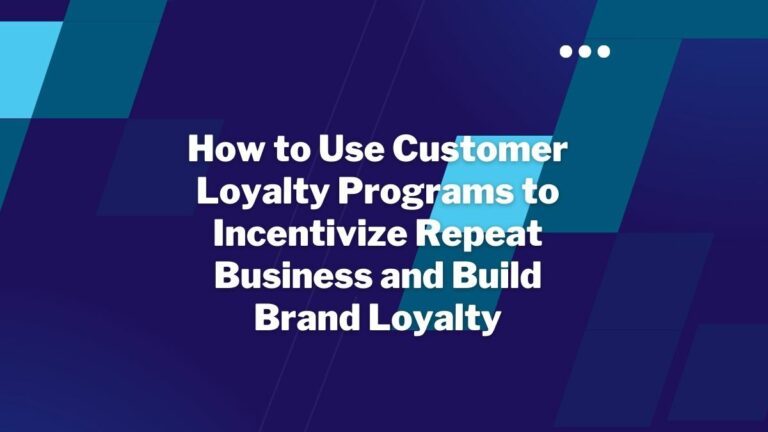
Top 10 Common Press Release Mistakes
What PR Errors to Avoid for Better Results
Press releases still remain one of the most effective ways to share important news, whether la product launch, announcing a significant partnership, or sharing company updates. However, writing a press release that gets picked up by the media isn’t as simple as putting together a few paragraphs. Minor errors, such as using excessive jargon or omitting essential contact information, can distinguish between widespread coverage and complete disregard.
To ensure your press release achieves its intended purpose, it’s crucial to recognize and correct the most common mistakes. By refining your structure, writing with clarity, and distributing your news at the right time, you can improve your chances of gaining media attention and reaching the right audience.
1. Weak or Unengaging Headline
When writing press releases, crafting engaging headlines and structuring your content in a clear, readable format is crucial. A common misstep is using generic headlines like “Cengage Group Announces New Product,” which fail to specify the product’s unique value.
Such vague titles don’t capture attention or convey the announcement’s significance. Instead, highlight what sets your product apart and why it matters to your audience. For example, “Cenage Group Revolutionizes Educator and Student AI Assistant” provides a clear and engaging news snapshot.
Another frequent mistake is crafting overly long headlines that dilute the main message and fail to capture attention. Lengthy headlines can overwhelm readers and obscure the core point of the announcement. Aim for brevity and clarity, ensuring the headline is concise yet informative. For instance, instead of “Leading Industry Provider Announces the Launch of an Innovative and Groundbreaking New Solution to Enhance Customer Experience,” opt for “New Solution Enhances Customer Experience.”

Employing technical jargon in headlines can also confuse or alienate readers. While industry-specific terms might be familiar to some, they can be perplexing to a broader audience. Use clear, straightforward language that conveys your message without unnecessary complexity. For example, replace “Hamilton Company Introduces Next-Generation Synergistic Platform” with “Hamilton Company Launches New Tool to Improve Research Lab Automation”.
Writing headlines in all capital letters is another pitfall to avoid. Such formatting can be perceived as shouting and unprofessional, potentially deterring readers. Stick to standard headline capitalization rules to maintain professionalism and readability.
Additionally, failing to convey the significance of the news in the headline can lead to reader disinterest. Ensure your headline communicates the news releases’ importance and entices readers to learn more. Your headlines can effectively draw attention and convey your message by focusing on clarity, relevance, and engagement.
2. Lack of Newsworthiness

Announcing routine internal events, such as staff meetings, often holds little interest for the public and is unlikely to capture media attention. Similarly, promoting minor product updates as significant news without a compelling angle can lead to disinterest among journalists and readers. It’s essential to assess whether your announcement significantly impacts or offers unique value to your target audience.
Issuing press releases for events or initiatives that have already occurred renders them outdated and diminishes their newsworthiness. Highlighting company achievements that don’t resonate with or affect your audience can also result in a lack of engagement. Before distributing a press release, consider if the content aligns with current industry trends or public interest to ensure it garners the attention it deserves.
By focusing on truly newsworthy content and presenting it in a timely and relevant manner, businesses can enhance the effectiveness of their press releases and increase the likelihood of media coverage. This approach captures the journalists’ interest and ensures that your message reaches and resonates with your intended audience.
3. Poor Formatting and Structure
One common mistake is presenting information in large, unbroken paragraphs, making it difficult for readers to scan and quickly grasp key points. Break content into shorter paragraphs and utilize bullet points for important details to enhance readability. This approach makes the information more digestible and allows readers to navigate through the content easily.
Another frequent oversight is neglecting to include a dateline, omitting the release date and originating city. The dateline provides context regarding the timing and location of the news outlet, which is crucial for journalists assessing the relevance and timeliness of the information. Ensuring that your press release includes a clear dateline helps establish credibility and situates your announcement within a specific timeframe and locale.
Consistency in formatting is also vital. Using inconsistent fonts and text sizes can distract and confuse readers, detracting from the professionalism of your press release. Maintaining uniform font styles and sizes throughout the document ensures a cohesive and polished appearance. Additionally, organizing content with subheadings or bullet points can significantly improve clarity, allowing readers to identify and focus on the most pertinent information quickly.
Adhering to the inverted pyramid structure is another best practice in press release writing. This means placing the most critical information at the beginning, followed by supporting details, and concluding with general or background information. Failing to follow this structure can result in key information being buried deep within the release, potentially causing readers to lose interest before reaching the main points. By structuring your press release this way, you ensure that essential details are communicated promptly, capturing the reader’s attention from the outset.

By avoiding these common formatting and structural mistakes, businesses and organizations can create press releases that are more engaging and more likely to be picked up by media outlets. A well-formatted press release enhances readability, ensures that key information is easily accessible, and presents your news in a professional and compelling manner.
4. Overuse of Marketing Jargon and Hyperbole

Overusing jargon and hyperbole can obscure your message and erode trust with your audience. Describing products or services with terms like “revolutionary” or “cutting-edge” without providing evidence can make your claims seem unsubstantiated. Instead, focus on presenting concrete facts and data demonstrating your product’s unique value.
Using industry-specific acronyms without explanation assumes that all readers are familiar with them, which may not be true. This can lead to confusion and disengagement. Always define acronyms and technical terms upon first use to ensure clarity for all readers.
Employing marketing buzzwords that add no real value or clarity to the message can dilute the impact of your press release. Phrases like “synergy” or “value-added” are often overused and may come across as empty language. Opt for straightforward language that conveys your message effectively.
Making grandiose claims that are not substantiated within the press release can damage your credibility. Readers are skeptical of exaggerated statements and expect evidence to support bold assertions. To validate your claims, provide supporting details, such as statistics or testimonials.
Writing in a promotional tone rather than an informative, journalistic style can deter journalists from covering your story. Press releases should present information objectively, allowing the facts to speak for themselves. Avoid overtly promotional language and focus on delivering newsworthy content that appeals to your target audience.
By avoiding the overuse of jargon and hyperbole and providing clear, substantiated information, your press releases will be more effective in engaging your audience and conveying your message with credibility.
5. PR SEO Optimization
Incorporating effective Search Engine Optimization (SEO) strategies into your press releases is crucial for enhancing online visibility. However, several common mistakes can undermine these efforts. One such error is overloading the press release with keywords, leading to unnatural and forced language.
This practice, known as keyword stuffing, not only disrupts the readability of your content but can also result in penalties from search engines, negatively impacting your site’s ranking. Integrating keywords naturally within the text to maintain a smooth and engaging narrative is essential.
Another frequent misstep is including too many embedded links within the press release. While it’s important to provide readers with access to additional information, an overabundance of links can be distracting and reduce readability. Moreover, search engines may interpret excessive linking as manipulative, harming your SEO performance. Aim to include only the most relevant links that add value to the reader’s experience.
Avoiding irrelevant keywords that don’t align with the press release content is another pitfall. Incorporating such keywords can confuse readers and search engines, leading to a mismatch between your content and audience expectations. This misalignment can result in higher bounce rates and lower search engine rankings. Ensure your chosen keywords accurately reflect your optimized press release’s main topics and themes.
Conversely, failing to use keywords is a missed opportunity for search engine visibility. Without targeted keywords, your press release is less likely to appear in relevant search queries, limiting its reach and effectiveness. Conduct thorough keyword research to identify terms your target audience is searching for and incorporate them thoughtfully into your content.
Not optimizing images with appropriate alt text is another common oversight. Alt text not only improves accessibility for visually impaired users but also provides search engines with context about the image content, aiding in proper indexing. Neglecting to include descriptive alt text can hinder your press release’s SEO performance. Ensure all images are accompanied by relevant alt text that accurately describes their content.

To navigate these complexities effectively, partnering with a company, such as Digital Results, with SEO and press release distribution service expertise can be beneficial. Such firms can help set your press release up for success, ensuring it serves as both an informative announcement and an effective SEO link-building tool.
Your press releases can achieve greater visibility and engagement by avoiding common SEO pitfalls and implementing best practices. Plus, agencies like this usually have years of experience and connections and have built up substantial media databases to get your press release distributed to those sites that will help drive traffic and SEO value for your announcement.
6. Omitting Contact Information

Including comprehensive contact information in your press release facilitates effective communication with media outlets and ensures your news reaches the intended audience. Omitting the company’s physical address can be particularly detrimental, especially for local media prioritizing regional stories. A physical address establishes credibility and situates your organization within a specific community, making it more relevant to local journalists and readers.
Another common oversight is providing only a general company email without specifying a contact person. This can make follow-ups challenging for journalists seeking additional information or clarification. Including a specific media contact person’s name, title, phone number, and email address streamlines communication and demonstrates your organization’s openness and readiness to engage with the press.
Failing to include social media handles in your press release means missing out on opportunities for broader engagement. Journalists and readers often use social media for real-time updates and additional context. By providing your organization’s social media profiles, you enable interested parties to follow your activities more closely and share your news across platforms, amplifying your message’s reach.
Not specifying the preferred method of contact can lead to potential communication delays. Indicating whether email, phone, or other communication is preferred helps journalists know the most efficient way to reach out. Additionally, omitting time zone information for contact availability can cause confusion, particularly for international media outlets. Stating the time zone and preferred contact hours ensures that media inquiries are made at appropriate times, facilitating prompt responses and fostering positive relationships with the press.
By meticulously including detailed contact information and preferences in your press release, you enhance your organization’s accessibility and credibility, increasing the likelihood of press release services disseminating your news.
7. Lack of Multimedia Elements

Releasing text-only statements without accompanying images or videos can result in missed opportunities for engagement. Visuals make your content more appealing and help illustrate your story, making it more memorable for your audience.
Another common oversight is failing to provide high-resolution images that media outlets can use. Journalists often seek quality visuals to complement their stories, and supplying them with professional, high-resolution images increases the likelihood of your news being featured. Ensure that your images meet the necessary quality standards and are relevant to your content.
Neglecting to include infographics that could help illustrate complex data or concepts is a missed opportunity. Infographics simplify intricate information, making it more digestible and engaging for readers. They can effectively highlight key statistics or processes, enhancing understanding and retention of your message.
Omitting captions or descriptions for included multimedia leaves context unclear, diminishing their impact. Captions provide necessary explanations and can guide the audience’s interpretation of the visuals. Always accompany your images and videos with concise, informative captions to maximize their effectiveness.
Not offering downloadable media assets makes it harder for journalists to access necessary materials. Providing easily accessible, downloadable content such as images, videos, and infographics facilitates media coverage and ensures your story can be accurately and effectively communicated. Consider creating a dedicated media kit or newsroom on your website where journalists can find and download these assets.
By addressing these common pitfalls and integrating multimedia elements thoughtfully, you can enhance the appeal and reach of your press releases, making them more compelling to both media professionals and your target audience.
8. Not Including Quotes

Incorporating well-crafted quotes into your press releases adds a human element and depth to your narrative. Without any human perspective or commentary, a purely factual press release can come across as dry and impersonal. Including insightful quotes from key individuals provides context and emotion, making the content more relatable and engaging for readers.
However, ensuring that these quotes are neither overly technical nor generic is important. Quotes laden with technical jargon may fail to add a personal touch and can alienate readers unfamiliar with the terminology. On the other hand, generic quotes that don’t offer unique insights or perspectives contribute little to the narrative and may be overlooked. Aim to craft quotes that provide clear, valuable insights and reflect the speaker’s authentic voice.
Attributing quotes to specific individuals is crucial for maintaining credibility. Failing to do so can make the information seem less trustworthy. Always include the full name and title of the person being quoted to lend authority to the statement.
Additionally, omitting quotes from key stakeholders, such as company executives or project leaders, can be a missed opportunity. These individuals can provide valuable insights and lend weight to the announcement, enhancing the overall impact of your press release.
By thoughtfully incorporating meaningful quotes from relevant individuals, you can enrich your press releases, making them more engaging and credible to your audience.
9. Releasing at the Wrong Time
When you submit your press release, it is a critical factor in its effectiveness. Distributing press releases late on a Friday afternoon can be particularly ineffective, as media attention tends to wane towards the end of the week. Journalists are often wrapping up their work and may overlook late-week announcements.
Similarly, sending out news during major industry events can result in your release being overshadowed by more significant stories, reducing its impact. It’s essential to be aware of the industry’s event calendar and choose a time when your news won’t be lost amidst more prominent announcements.
Ignoring time zones is another common mistake. Sending releases outside business hours for key media contacts can lead to them being missed or buried under other communications. To maximize visibility, schedule your press releases to align with the working hours of your target audience, considering the various time zones they operate in.
Failing to consider embargoes or exclusive agreements can also lead to premature publication, which may damage relationships with media partners and reduce the effectiveness of your announcement. Always coordinate with involved parties to ensure proper timing.

Not aligning the release timing with related news cycles or industry announcements can further diminish the impact of your press release. You can enhance the likelihood of media coverage and audience engagement by strategically timing your release to complement current news trends or fill gaps during slower news periods. Careful planning and timing are essential to ensure your press release receives the attention it deserves.
10. Overloading with Information

An effective press release requires providing important information and maintaining the reader’s interest. One common misstep is including extensive company history that isn’t relevant to the current news. While background information can offer context, overloading the reader with unnecessary details can detract from the main message. It’s crucial to focus on the news at hand and provide only pertinent background information that enhances understanding.
Similarly, providing excessive technical specifications can overwhelm readers, especially those who may not be familiar with industry jargon. Instead of listing numerous minor product features, it’s more effective to highlight key benefits that resonate with your target audience. This approach ensures that the press release remains accessible and engaging, conveying your product’s or service’s value without inundating the reader with superfluous details.
Adding unrelated statistics or data that don’t support the main message can also dilute the impact of your press release. Every piece of information included should reinforce the core announcement. Incorporating lengthy disclaimers or legal language can further clutter the content. Summarizing essential legal information or providing links to detailed terms elsewhere keeps the press release concise and focused.
By avoiding the pitfall of overloading your press release with extraneous information, you can create a more compelling communication piece that captures and retains the reader’s attention.
Press Release Wrap-Up
Press releases remain a valuable tool for generating media coverage and SEO links, but only when executed correctly. Small mistakes, such as releasing news at the wrong time or failing to include multimedia elements, can prevent your message from reaching its full potential.
You can significantly improve your press release’s effectiveness by focusing on best practices, such as crafting strong headlines, writing in an engaging yet professional tone, and ensuring proper formatting. With careful planning and attention to detail, your press release can become an influential asset in your marketing and communications strategy.
Ready to Grow Your Search Engine Results?
Let Digital Results assist you in your SEO strategy and help
deliver the search engine results you need.





